Is Your Mole Changing? It's High Time You Book An Appointment With A Dermatologist

By adulthood, the average person has between 10 and 40 moles on their body. These small growths on the skin — which are usually round or oval in shape and pink, tan, brown or black in color — are very common and generally harmless.
But occasionally, an abnormal mole can be a sign of melanoma, a relatively rare but deadly form of skin cancer. So it’s crucial to know what to look for. (Non-melanoma skin cancers like basal cell and squamous cell carcinomas make up the majority of cases, but tend to be less aggressive.)
Melanoma can develop from an existing mole, but more commonly, it appears as a new lesion on the skin. It can appear anywhere on the body but the most common locations are the chest and back for men and legs for women.
The good news is that, when caught early, melanoma is typically curable, dermatologist Dr. Darrell S. Rigel told HuffPost.
“If it is caught early, a simple removal typically suffices to achieve a cure,” said Rigel, a clinical professor of dermatology and director of the Melanoma Surveillance Clinic at the Mount Sinai Icahn School of Medicine.
However, once it has spread, the survival rate for melanoma is less than 50% — even with some of the newly available treatments, Rigel explained, noting that this type of cancer “tends to spread early in its course.”
Certain factors may increase your risk of melanoma, including excessive sun exposure, use of indoor tanning beds, having atypical moles and having a family history of the disease. It’s also more common among people with fair skin that burns easily, red or blond hair and light-colored eyes.
People of color are much less likely to get melanoma than white people — but are more likely to die if they do get it, due to a lack of public and professional awareness. For those with darker skin tones, melanomas tend to show up in areas with less sun exposure like the palms of the hands, soles of the feet or beneath the fingernails or toenails.
How To Spot A Suspicious Mole
To help determine if your mole might actually be a cancerous melanoma, use the dermatologist-backed ABCDE rule, which stands for asymmetry, border, color, diameter and evolving.
If your mole fits one or more of the criteria below, make an appointment with your dermatologist to get it checked out. Don’t panic: Most atypical moles do not become cancerous. But it’s worth having any suspicious spots examined to be safe.
Asymmetry: If you were to draw a line down the center of the mole, one half wouldn’t match the other’s shape or size.
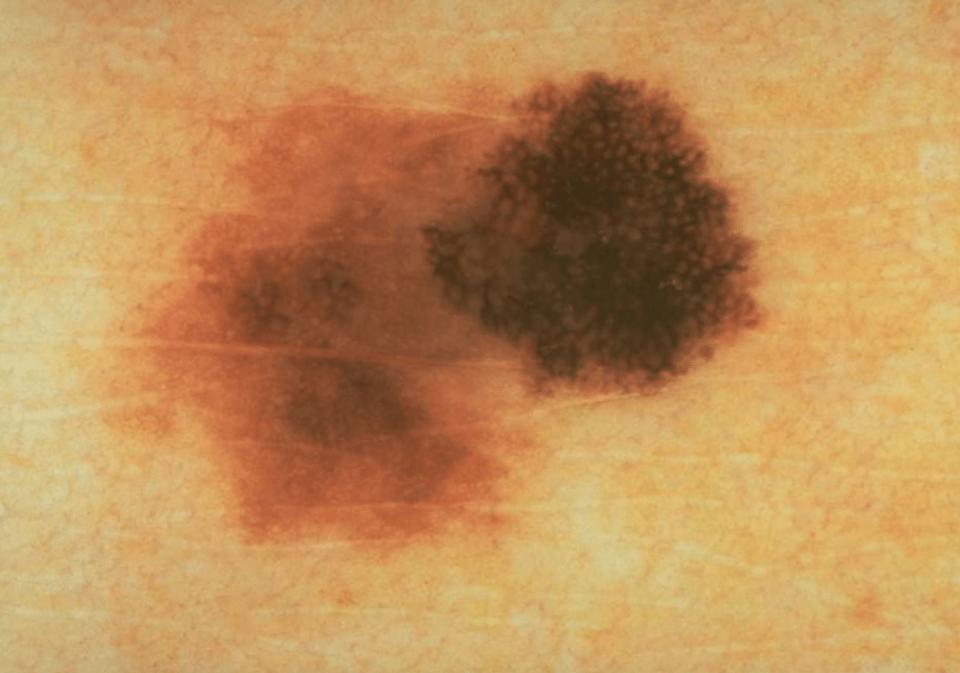
If you were to draw a line down the middle of an asymmetrical mole, the two halves would not match.
Border that’s irregular: It might have edges that are notched, scalloped or blurred, “meaning the borders between the mole and normal skin are unclear,” Seattle dermatologist Dr. Joyce Park told HuffPost.
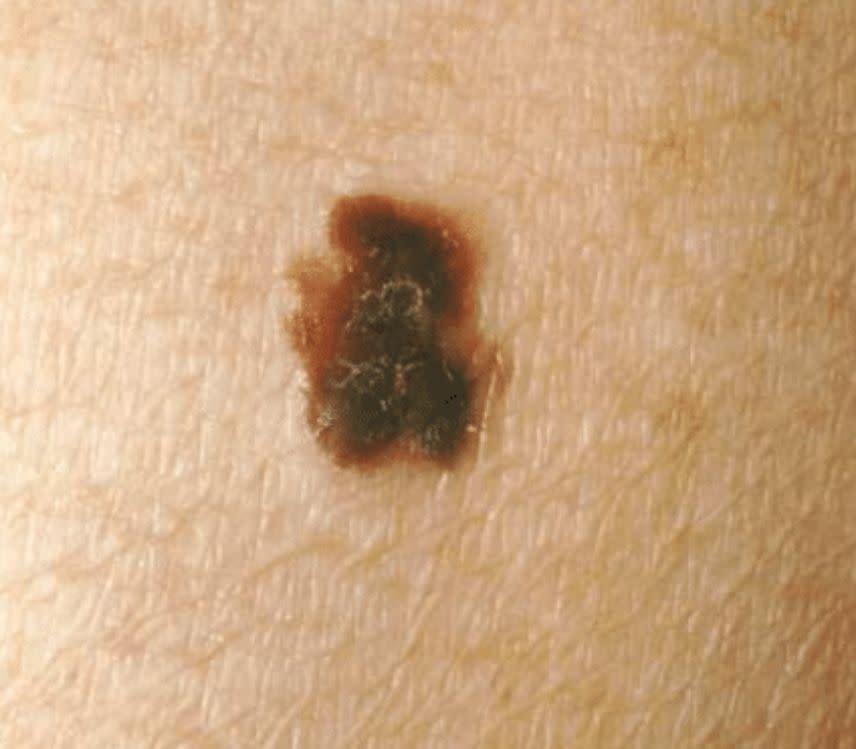
A mole with an irregular border may have scalloped or notched edges.
Color that’s uneven: Pay attention if the coloring is not uniform throughout. The same mole may include “reds and pinks, varying shades of brown and black,” Park said. As it grows, you may even notice some white or blue appears.
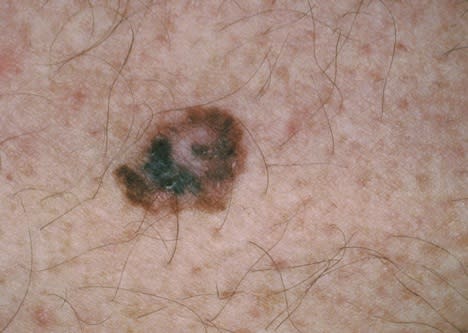
A variety of colors within the same mole is a warning sign to look out for.
Diameter greater than 1/4 inch: Think the size of a pea or a pencil eraser.
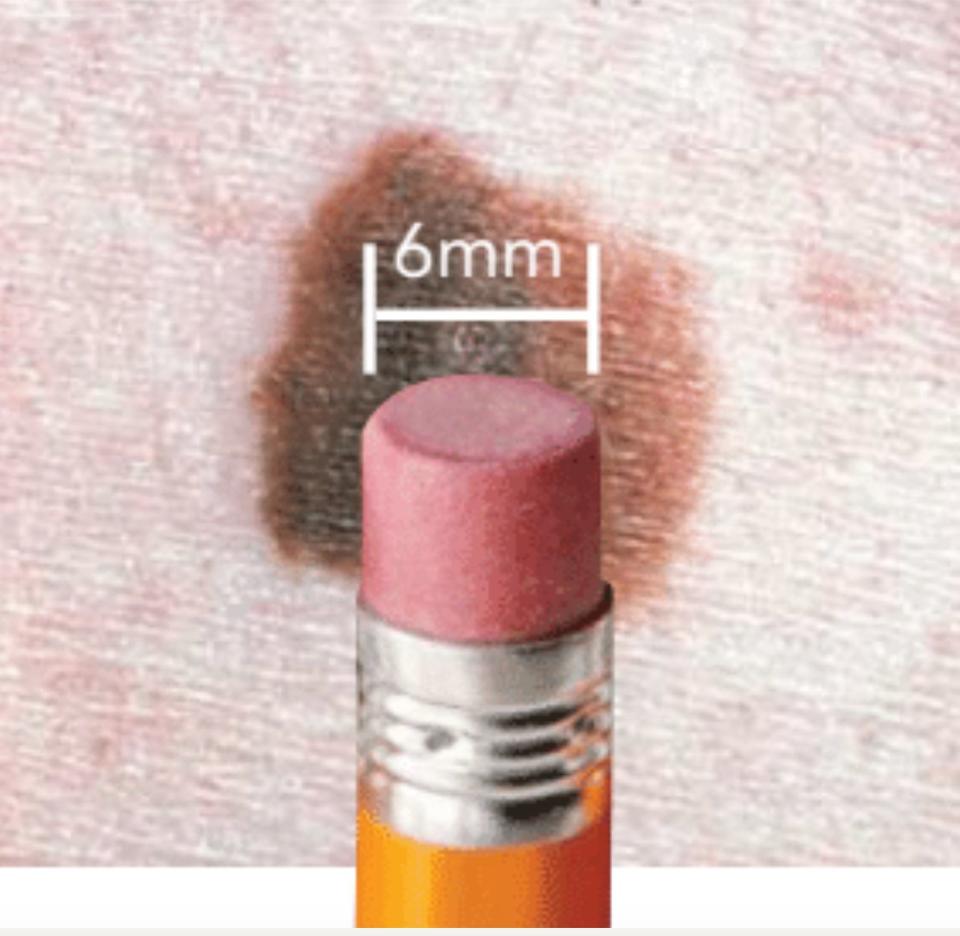
Melanomas tend to be larger than a pencil eraser in diameter, but can be smaller.
Evolving: The mole is growing in size or changing in shape or color.

Look out for any spot or lesion that evolves in terms of size, shape or size. Other changes like bleeding or crusting are warning signs, too.
Keep an eye out for what dermatologists refer to as “ugly ducklings” ― in other words, moles that stick out because they appear “markedly different from the rest of the moles on your body,” Park said.
Know that not all melanomas fit the above descriptors. So as a general rule of thumb: If there’s a spot on your body that’s “growing, crusting, bleeding or changing significantly” have it looked at by your dermatologist, Rigel advised.
The American Academy of Dermatology also recommends doing your own regular skin self-exams at home. Look at your whole body — front and back — in a mirror. Then lift your arms and look at your right and left sides. Be sure to also check your forearms, armpits, palms of your hands, as well as the back of your legs, between your toes and the bottoms of your feet. Don’t forget your nails, neck and scalp, too. It may be useful to have a loved one take a look at the back side of your body or any other areas that are difficult for you to see, or to ask your hairstylist to take a look at your scalp.
“In order for this process to be effective, you need to take the time to learn your skin and your moles,” Rigel said. “For those at risk for skin cancer, self skin examinations [are] recommended monthly. We also recommend this group see their dermatologist annually.”
What To Do If You See Something Suspicious
The dermatologist will perform a physical exam, inspecting the suspicious spot with their eyes and also with a dermatoscope — a non-invasive magnifying instrument that allows them to get a better look at the lesion.
“If the mole looks suspicious for cancer, or if it has been changing or growing in size, the dermatologist might take a biopsy,” Park said. “We use local anesthetic to numb the skin, then remove the mole.”
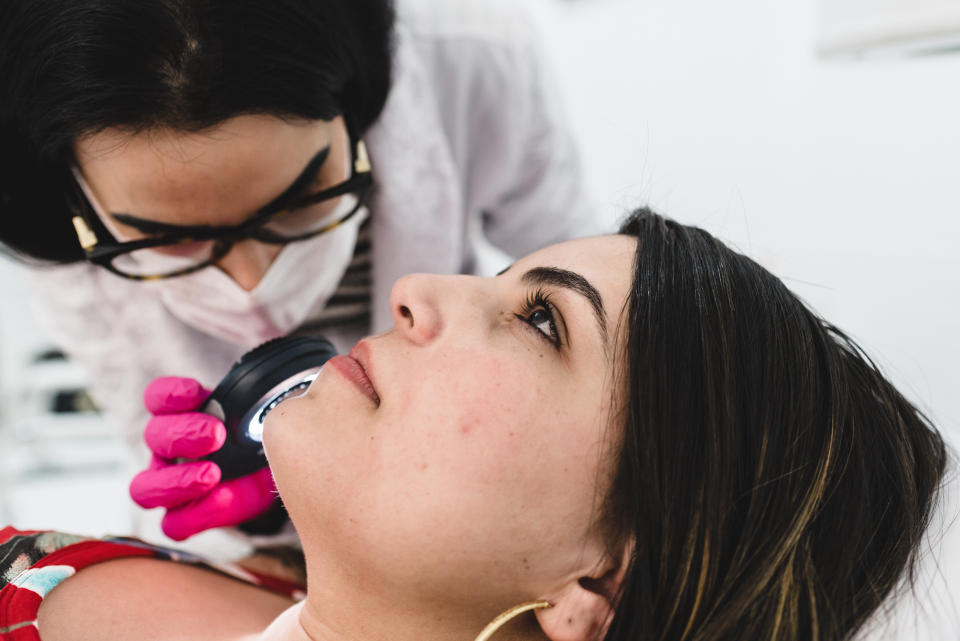
The dermatologist will look at the suspicious lesion with a dermatoscope to determine whether a biopsy is necessary.
This is typically done with a “simple scrape,” Rigel said, which is then covered by a bandage and does not require stitches. Afterward, the skin sample is sent to the lab for testing.
“The results come back from the pathologist in a few days and the appropriate follow-up can be done then,” Rigel said
Reducing Your Risk Of Skin Cancer
To minimize your chances of developing skin cancer, stay in the shade when you can — especially between the hours of 10 a.m. and 2 p.m., when the sun is at its strongest, the American Academy of Dermatology recommends.
Wear a sunscreen with an SPF of 30 or higher that’s broad-spectrum and water-resistant. And don’t forget to reapply every couple of hours or after sweating or swimming. Wide-brimmed hats, sunglasses with UV protection and lightweight, long-sleeved shirts and pants can provide extra protection, too.
And if you’re ever concerned about a spot on your skin, don’t hesitate to get it checked out by a dermatologist.
“The visit is easy and most of the time it will turn out to be nothing,” Rigel said. “But if it is something, getting it taken care of as early as possible is critical.” This post originally appeared on HuffPost.